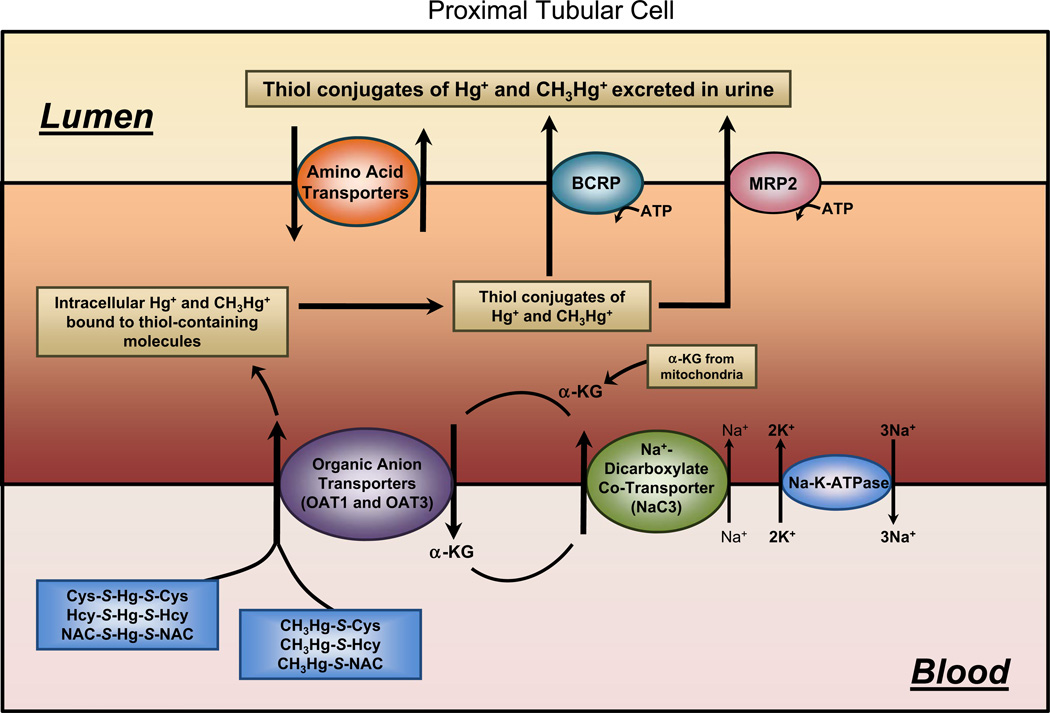Fig. 2.
Diagram of a proximal tubular cell outlining the mechanisms involved in the uptake and export of Hg2+ and CH3Hg+. At the luminal plasma membrane of proximal tubular cells, it appears that amino acid transporters are the primary mechanisms by which mercuric ions are taken up into cells. At the basolateral membrane, organic anion transporters (OAT) appear to be primarily involved in this uptake. Mercuric species may be secreted from proximal tubular cells into the tubular lumen via the actions of the breast cancer resistance protein (BCRP) or the multidrug resistance-associated protein (MRP2) located on the luminal plasma membrane

